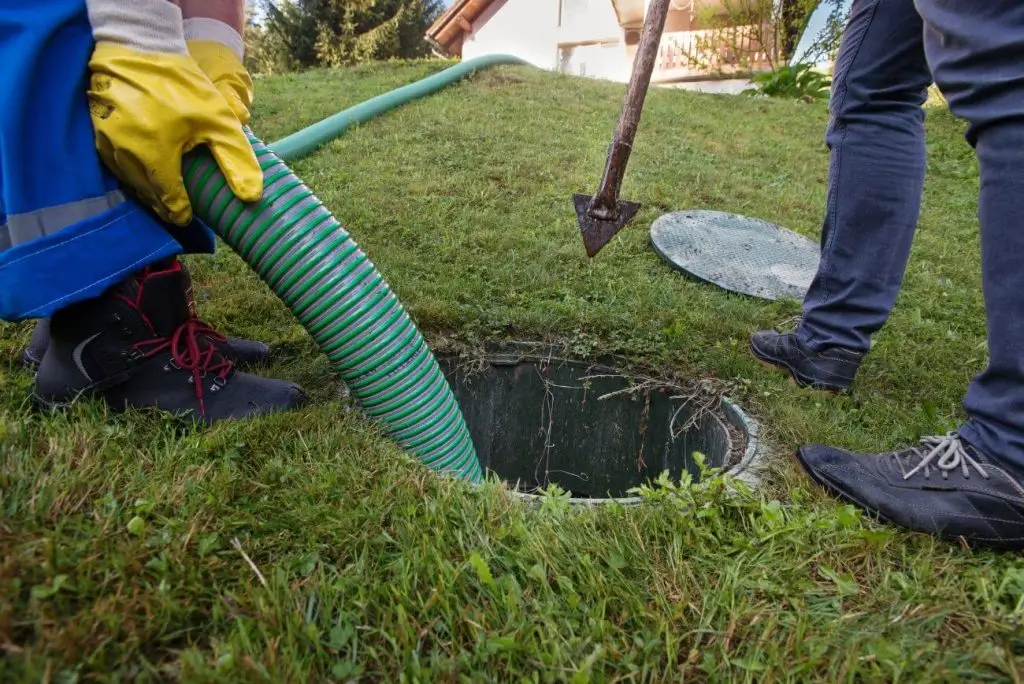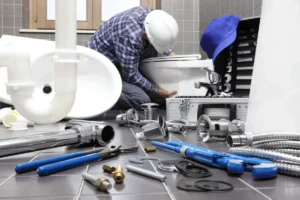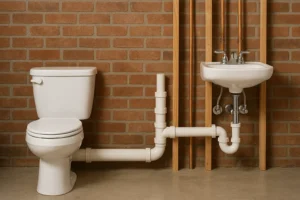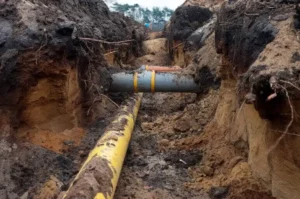Is that gurgling sound from your toilet keeping you up at night? You’re not alone. Many San Diego homeowners ignore the early warning signs of sewer line problems until it’s too late and they’re facing a messy, expensive emergency.
At Solid Plumbing & Drain Inc., we’ve spent the last 20 years helping homeowners across San Diego County identify and address sewer line issues before they become disasters. Our approach is simple: educate you on what to look for, explain what’s happening underground, and provide honest solutions.
In this article, you’ll discover the seven critical warning signs that your sewer line is about to fail, particularly in San Diego’s unique clay soil conditions. You’ll learn what causes these problems, why they’re especially common in our region, and most importantly, what you can do about them before facing a full-blown emergency.
Why San Diego’s Clay Soil Creates Unique Sewer Line Challenges
That rich, clay-heavy soil that makes Southern California so distinctive? It’s also one of the biggest threats to your home’s sewer system. Unlike other soil types, clay soil in San Diego has specific characteristics that directly impact your plumbing:
Expansion and Contraction Cycles
San Diego’s clay soil expands when wet and contracts when dry. This constant movement puts tremendous pressure on your underground pipes, especially during our occasional heavy rains followed by extended dry periods.
Root Intrusion Vulnerability
Our clay soil creates ideal channels for tree roots seeking moisture. These roots are naturally drawn to the tiny leaks and joints in your sewer line, where they can quickly grow into massive blockages.
Soil Settling and Shifting
Many San Diego neighborhoods were developed on hillsides or areas with varying soil density. Over time, this soil settles unevenly, potentially causing your sewer line to sag, crack, or separate at the joints.
When you understand these regional factors, the warning signs we’re about to discuss make much more sense. Let’s dive into what you should be watching for

Warning Sign #1: Slow Drains Throughout Your Home
A single slow drain might just be a local clog. But when multiple drains throughout your home start backing up, it’s time to pay attention. This is often the earliest warning sign of a sewer line problem
What’s Actually Happening Underground
When multiple drains slow down simultaneously, it typically indicates a partial blockage in your main sewer line. In San Diego homes, this is commonly caused by:
- Tree root intrusion (especially from water-seeking species like eucalyptus and pepper trees common in our region)
- Accumulated buildup from grease, soap, and debris
- Pipe sagging from soil settlement
- Scale buildup from our region’s hard water
Why This Warning Sign Is Often Missed
Many homeowners mistakenly treat each slow drain as a separate problem, using chemical drain cleaners that can actually damage your pipes further. By the time they realize it’s a system-wide issue, the blockage has often progressed significantly.
What You Should Do
If you notice multiple slow drains, don’t wait. A professional video inspection can identify exactly what’s happening in your sewer line before the problem worsens. This preventative step costs far less than emergency repairs.
Warning Sign #2: Gurgling Sounds from Drains or Toilets
That strange gurgling noise when you flush your toilet or run your sink isn’t your home trying to talk to you—it’s a cry for help from your sewer system.
What Those Gurgling Sounds Really Mean
Gurgling occurs when air is trapped in your plumbing system, typically because water isn’t flowing properly through your sewer line. This air gets pushed back up through your pipes, creating that distinctive sound.
In San Diego’s older neighborhoods like North Park, Mission Hills, or La Jolla, these sounds are particularly common in homes with original clay or cast iron pipes that have deteriorated over time.
Common Causes in San Diego Homes
- Partial blockages from tree roots (especially after our winter rainy season)
- Venting issues specific to older San Diego home designs
- Pipe collapse in areas with significant soil movement
- Bellied (sagging) pipes from ground settlement
The Danger of Ignoring This Warning Sign
Gurgling sounds typically progress to more serious issues within weeks or months. By addressing this early warning sign, you can often avoid emergency situations and more extensive repairs
Warning Sign #3: Sewage Odors Inside or Outside Your Home
There’s no mistaking that distinctive smell. If you’re detecting sewage odors either inside your home or in your yard, your sewer line is already compromised.
Why You’re Smelling Sewage
Your plumbing system is designed to be airtight, with traps and vents that prevent sewer gases from entering your living space. When you smell sewage, it means:
- A pipe has cracked or broken
- A seal has failed
- Wastewater is backing up somewhere in your system
In San Diego’s coastal communities like Ocean Beach or Pacific Beach, salt air can accelerate pipe deterioration, making this warning sign more common.
Health Risks You Shouldn’t Ignore
Sewer gases aren’t just unpleasant—they can be dangerous. They contain methane, hydrogen sulfide, and bacteria that pose serious health risks, especially in enclosed spaces.
Locating the Source
Determining whether the odor is coming from inside your home or your yard can help identify the location of the problem:
- Indoor odors often indicate issues with your home’s plumbing vents or traps
- Outdoor odors, especially in specific areas of your yard, typically point to underground leaks
Professional plumbers use specialized equipment to pinpoint the exact location of these leaks, saving you from unnecessary excavation.
Warning Sign #4: Unusually Green or Lush Patches in Your Yard
That surprisingly vibrant patch of grass in your otherwise drought-stressed San Diego lawn isn’t a miracle—it’s a warning sign.
Why Your Lawn Is Telling You About Your Sewer Line
Leaking sewage acts as a powerful fertilizer. When your sewer line cracks or breaks, it releases nutrient-rich wastewater into the surrounding soil, creating noticeably greener or lusher vegetation directly above the leak.
This sign is particularly noticeable in San Diego due to our water conservation practices and typically drier lawns.
Seasonal Considerations in Southern California
This warning sign is most visible during our dry months (typically May through October) when the contrast between normal and fertilized grass is most apparent. After winter rains, the difference may be less noticeable as all vegetation greens up.
Additional Visual Clues to Look For
Beyond unusually green grass, watch for:
- Soggy areas that don’t dry out, even during hot weather
- Indentations or depressions forming in your yard
- Unusual insect activity attracted to the moisture and nutrients
Early detection through these visual clues can save you thousands in repair costs and prevent potential health hazards
Warning Sign #5: Foundation Cracks or Settlement Issues
Your home’s foundation and your sewer line have a closer relationship than you might think. Problems with one often lead to problems with the other.
The Connection Between Sewer Lines and Foundations
When sewer lines leak, they can erode the soil supporting your foundation. In San Diego’s hillside communities like Clairemont, Del Cerro, or La Mesa, this can be particularly problematic due to the already challenging soil conditions.
Conversely, foundation settlement can damage your sewer line by putting stress on rigid pipes that weren’t designed to bend or shift.
Signs to Watch For
- New cracks in your foundation, especially near where your sewer line exits your home
- Doors or windows that suddenly stick or won’t close properly
- Sloping floors or visible sagging in parts of your home
- Cracks appearing in interior walls, particularly near the floor
The Importance of Coordinated Repairs
When foundation and sewer line issues occur together, the repair sequence matters. Addressing one without considering the other can lead to recurring problems. Professional plumbers work with foundation specialists to ensure repairs are properly coordinated
Warning Sign #6: Mold or Excessive Moisture in Your Home
Unexplained mold or persistent dampness in your home—especially in lower levels—could be directly connected to sewer line problems.
How Sewer Line Problems Create Moisture Issues
Failed sewer lines can cause moisture problems in several ways:
- Water backing up through floor drains
- Increased humidity from small leaks
- Condensation on cold water pipes when sewer gases cause temperature differences
In San Diego’s coastal areas, where humidity is already higher, these moisture problems can accelerate quickly.
Health Implications of Sewer-Related Mold
Mold resulting from sewer leaks is particularly concerning because it may contain bacteria and pathogens from wastewater. This creates more significant health risks than typical household mold.
Distinguishing Sewer-Related Moisture from Other Sources
Professional plumbers can help determine whether your moisture issues stem from:
- Sewer line problems
- Roof or window leaks
- Condensation from HVAC systems
- High groundwater (common in Mission Valley and other low-lying areas after heavy rains)
Proper diagnosis ensures you address the root cause rather than just treating symptoms
Warning Sign #7: Recurring Drain Backups Despite Clearing
Perhaps the most frustrating warning sign is when you’ve already had your drains cleared, only to face the same problem weeks or months later.
Why One-Time Fixes Often Fail
When drain cleaning provides only temporary relief, it typically means you’re addressing a symptom rather than the underlying cause. Common scenarios in San Diego homes include:
- Tree roots that are cut but quickly regrow (especially problematic with mature trees common in established neighborhoods like Kensington or University Heights)
- Collapsed or broken sections of pipe that catch debris
- Offset joints from soil movement that create recurring catch points
- Scale buildup from San Diego’s hard water that rapidly returns
The Limitations of DIY Solutions
Store-bought chemicals and rental equipment rarely solve persistent sewer line problems. In fact, they often make matters worse by:
- Damaging older pipes with harsh chemicals
- Providing only partial clearing that quickly returns
- Failing to address structural issues
When to Consider Sewer Line Replacement
After 20 years serving San Diego County, we’ve found that homes experiencing recurring backups despite multiple professional cleanings often benefit most from sewer line replacement, especially when:
- The home is over 40 years old with original plumbing
- Clay or cast iron pipes are present (common in older San Diego neighborhoods)
- Multiple repairs have already been made
- Video inspection shows significant deterioration
Modern trenchless technologies make replacement far less disruptive than in the past

What to Do If You Notice These Warning Signs
If you’ve identified one or more of these warning signs, taking prompt action can save you thousands in emergency repairs and prevent property damage.
Step 1: Document What You’re Experiencing
Keep a simple log of when you notice issues, which fixtures are affected, and any patterns you observe. This information helps professionals diagnose the problem more quickly and accurately.
Step 2: Schedule a Professional Video Inspection
Modern sewer cameras can travel through your entire sewer line, providing real-time video of exactly what’s happening underground. This diagnostic approach eliminates guesswork and ensures you only pay for necessary repairs.
At Solid Plumbing & Drain Inc., we provide detailed video inspections that let you see exactly what we see, so you understand the condition of your sewer line firsthand.
Step 3: Review Your Repair Options
Depending on what the inspection reveals, your options might include:
- Targeted cleaning to remove blockages
- Spot repairs for isolated issues
- Partial or complete sewer line replacement
- Trenchless rehabilitation methods that avoid extensive digging
Step 4: Consider Preventative Maintenance
Once your immediate issue is resolved, implementing a preventative maintenance plan can help avoid future problems. For San Diego homeowners, this typically includes:
- Annual video inspections if you have mature trees near your sewer line
- Regular hydro-jetting to remove buildup before it causes blockages
- Root treatment programs for properties with known root intrusion issues
Don’t Wait Until It’s Too Late
Sewer line failures rarely happen without warning. By recognizing these seven critical signs early, you can address problems before they escalate into emergencies.
If you’ve noticed any of these warning signs in your San Diego home, schedule a professional inspection today. Our experienced team will help you understand exactly what’s happening with your sewer line and provide clear, honest recommendations for addressing any issues we find.
Contact Solid Plumbing & Drain Inc. now to protect your home from the disruption and expense of emergency sewer line failures. Your peace of mind is worth it.
Why San Diego Homeowners Choose Solid Plumbing & Drain Inc. for Sewer Line Services
For 20 years, we’ve been the trusted sewer line experts for homeowners throughout San Diego County. Our approach combines technical expertise with honest communication:
- We show you video evidence of any problems we find
- We explain all your options, not just the most expensive one
- We provide upfront pricing with no surprise fees
- We use minimally invasive techniques whenever possible
- We stand behind our work with industry-leading warranties
Our team specializes in the unique challenges of Southern California plumbing systems, from coastal corrosion issues to hillside soil movement.










